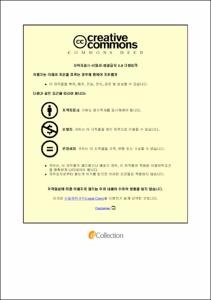3D printed kagome 구조의 PCL scaffold를 이용한 onlay 형태의 골이식
- Abstract
- A bone graft has been widely operated for various propose such as cosmetics and reconstruction of the defect. However, onlay graft (one-wall defect reconstruction) is still challenging due to poor blood supply and insufficient graft stability. Many tissue engineering researches have been conducted for developing alloplastic bone substitutes. But there were a few studies for application of alloplastic bone substitutes on onlay graft. In order to successful results on onlay graft, the selection both of the surgical process and bone graft material are critical points. Recently, the 3D designed kagome-structure poly ε-caprolactone (PCL) scaffold was reported to have osteoconductivity in an intra-osseous bone defect which is ideal condition for bone regeneration. In addition, this scaffold has proper mechanical stability enough to rigid fixation, precise fabrication according to 3D design, and proper biocompatibility. Therefore, this scaffold has proper characteristics to apply the onlay graft. The common problems of onlay graft are wound dehiscence due to insufficient volume of soft tissue, flap necrosis due to excessive soft tissue manage, infection from hematoma, and lack of vascularization. The aim of this study is to introduce the onlay graft surgery protocol that minimizes complications using the 3 and 6 mm height of 3D kagome-structure PCL scaffold fabricated based on curved surface of micro-CT image on rat calvarial bone, and report clinical outcome of the graft with recombinant human bone morphogenetic proteins (rhBMP-2) in the hyaluronic acid (HA) based hydrogel.
For the surgical protocol, the incision was made posterior of the scaffold to avoid lay over the scaffold. After sufficient dissection, careful decortification was made on the Bregma of rat. Four miniscrews were installation for rigid fixation of the scaffold. The experiments were divided 4 rats into the 2-, 4-, and 8-weeks sacrifice group of each height scaffold. Total 24 rats were operated in this protocol with 3 and 6 mm in height and 5 mm in diameter of cylinder types 3D kagome-structure PCL scaffold. All surgical sites were complete healed without the scaffold exposure. After the sacrifice, the scaffolds were well integrated even after removal of fixation screws. In micro-CT analysis, no bone formation was observed at 2 weeks after surgery. At 8 weeks, the new bone was grow up into the fist column layer of the scaffold with kagome-shape, and the average bone formation height was about 1.0 mm compared with the negative control. Histologically, soft tissue and collagen fibers were filled with cavity of the scaffolds at 2 weeks. At 4 weeks, active bone formation was observed from the calvarial bone, and the new bone was observed inside the scaffold. The angiogenesis and dense collagen bundle were observed on the second column cavity of the scaffold. The collagen bundle was showed higher density in 3 mm-scaffold compared with the 6 mm-scaffold in rat calvarial bone. With regard to HA based rhBMP-2 (1.0 mg/mL), the new bone formation with angiogenesis and dense collagen bundles at 2 weeks was comparable with that of the scaffold without rhBMP-2 at 8 weeks. In particular, the 3 mm-scaffold with rhBMP-2 was showed superior bone formation results compared with 6 mm-scaffold with rhBMP-2 at postoperative 4 and 8 weeks.
According to our experimental results, the 3D-kagome PCL scaffold was showed proper mechanical property for enduring fixation and osteoconductivity for onlay graft. The Kagome PCL scaffold incorporated with HA hydrogel and rhBMP-2 was showed early bone formation at 2 weeks, comparable results with the scaffold without rhBMP-2 at 8 weeks, which indicated as suitable carrier of rhBMP-2. Further studies should be conducted for optimizing application of rhBMP-2 on this scaffold to enhancing bone regeneration capacity to the large animals.
- Issued Date
- 2020
- Awarded Date
- 2020-08
- Type
- Dissertation
- Alternative Author(s)
- Jeong-Kui Ku
- Affiliation
- 울산대학교
- Department
- 일반대학원 의학과
- Advisor
- 이부규
- Degree
- Doctor
- Publisher
- 울산대학교 일반대학원 의학과
- Language
- eng
- Rights
- 울산대학교 논문은 저작권에 의해 보호받습니다.
- Appears in Collections:
- Medicine > 2. Theses (Ph.D)
- 파일 목록
-
-
Download
 200000334893.pdf
기타 데이터 / 11.03 MB / Adobe PDF
200000334893.pdf
기타 데이터 / 11.03 MB / Adobe PDF
-
Items in Repository are protected by copyright, with all rights reserved, unless otherwise indicated.